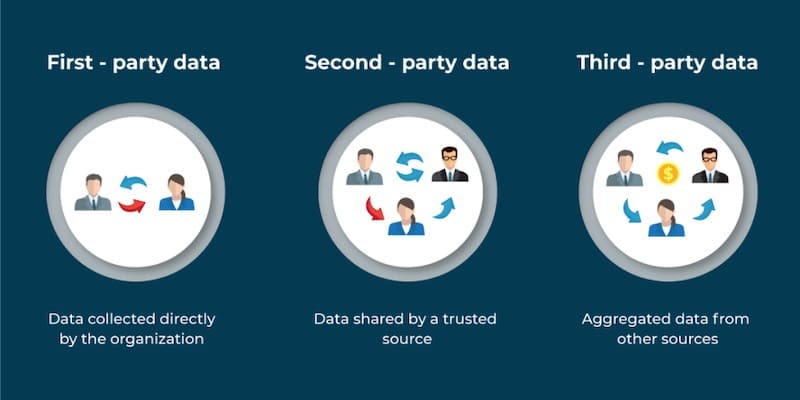To collect data for email marketing, start with a clear plan. Understand your audience and gather information ethically.
Email marketing relies on good data. Without it, your campaigns may fail. Knowing how to collect data correctly is crucial. It helps you target the right people, with the right message, at the right time. This introduction will guide you on gathering essential data.
You will learn methods to collect emails, segment your audience, and ensure compliance with privacy laws. Ready to improve your email marketing? Let’s dive in.

Credit: marketeng.com
Importance Of Data Collection
Data collection is crucial for successful email marketing. It helps businesses understand their audience. Knowing your audience leads to better communication. This means higher engagement and more conversions.
Without data, email marketing is like shooting in the dark. You need data to create relevant and timely messages. This keeps your audience interested and coming back for more.
Boosting Campaign Efficiency
Data collection boosts campaign efficiency. It allows you to segment your audience. Segmentation means sending the right message to the right person. This increases open rates and click-through rates.
Efficient campaigns save time and resources. You can focus on what works and improve what doesn’t. Data helps you track and measure success. This makes your email marketing efforts more effective.
Personalization And Targeting
Personalization is key in email marketing. Data collection enables personalized messages. Personalized emails feel more relevant to the reader. This builds trust and loyalty with your audience.
Targeting specific groups within your audience is also possible. Data helps you understand their needs and preferences. This allows you to tailor your content. Targeted emails are more likely to convert.
Identifying Data Sources
Collecting data for email marketing is crucial for building effective campaigns. Identifying the right data sources helps you understand your audience better. This section focuses on two main data sources: website analytics and social media insights.
Website Analytics
Website analytics provide valuable information about your visitors. Analyze data such as page views, time on site, and bounce rates. This helps you identify which content resonates with your audience. Use tools like Google Analytics to track user behavior. Discover which pages lead to the most email sign-ups. Understand the journey your visitors take on your website.
Social Media Insights
Social media insights reveal what your audience engages with on your platforms. Platforms like Facebook, Instagram, and Twitter offer analytics tools. These tools show engagement rates, likes, shares, and comments. Identify which posts are most popular. Learn what content your followers prefer. Use this information to tailor your email marketing content.
Using Lead Magnets
Lead magnets are tools that attract potential customers. These tools offer something valuable in exchange for their email address. This strategy is very effective for building your email list. Below are some popular types of lead magnets.
Ebooks And Guides
Creating ebooks and guides can be a great way to collect emails. These resources should provide useful information. For instance, a guide on how to start a blog. Or an ebook about healthy recipes.
- Make the content valuable.
- Ensure it is easy to read.
- Promote it on your website and social media.
Ask for the visitor’s email to download the ebook. This way, you get their contact details.
Webinars And Workshops
Webinars and workshops are interactive. They offer real-time value. People sign up to learn something new. This makes them excellent lead magnets.
| Type | Benefit |
|---|---|
| Webinars | Real-time interaction with experts. |
| Workshops | Hands-on experience and learning. |
Promote your webinar on your website. Use social media to spread the word. Make sure to collect email addresses during sign-up.

Credit: www.convert.com
Implementing Signup Forms
Effective email marketing begins with collecting data through signup forms. These forms are crucial for building your email list. They help you gather necessary information from your audience. Let’s explore the best practices and placement strategies for implementing signup forms.
Best Practices
Following best practices ensures your signup forms are efficient and user-friendly. Here are some key points to consider:
- Keep it Simple: Ask only for essential information. Usually, a name and email address are enough.
- Use Clear Language: Ensure the form is easy to understand. Avoid jargon.
- Mobile-Friendly Design: Ensure the form is responsive. It should work well on mobile devices.
- Offer Incentives: Provide a reason for signing up. Offer discounts, free trials, or exclusive content.
- Privacy Assurance: Include a privacy statement. Assure users their information is safe.
Placement Strategies
Strategic placement of signup forms can significantly impact your sign-up rates. Consider these strategies:
- Homepage: Place a signup form on your homepage. Make it easily visible.
- Blog Posts: Include forms within blog posts. They can be at the beginning, middle, or end.
- Pop-ups: Use pop-up forms sparingly. They should appear after a user spends some time on your site.
- Sidebar: A sidebar form is effective. It stays visible as users scroll.
- Footer: Place a form in the footer. This is a common practice and effective.
By following these best practices and placement strategies, you can optimize your signup forms for better data collection.
Segmenting Your Audience
Segmenting your audience is crucial for effective email marketing. By dividing your audience into smaller groups, you can send more personalized and relevant content. This increases engagement and improves your campaign’s success rate.
There are several ways to segment your audience. Two common methods are demographic segmentation and behavioral segmentation. Each method offers unique insights into your audience’s preferences and needs.
Demographic Segmentation
Demographic segmentation involves dividing your audience based on personal traits. These traits include age, gender, income, education level, and job title. Knowing these factors helps you tailor your message to different groups.
For example, younger audiences might prefer trendy products. Older groups might be interested in more practical items. By understanding these differences, you can create content that resonates with each segment.
Behavioral Segmentation
Behavioral segmentation focuses on how your audience interacts with your brand. This includes their purchasing habits, website activity, and email engagement. Analyzing these behaviors can provide valuable insights.
For instance, you can identify frequent buyers and send them loyalty rewards. Or, you can target inactive subscribers with re-engagement campaigns. This approach ensures your emails are relevant and timely.
Segmenting your audience using these methods helps you deliver targeted, meaningful content. This leads to better engagement and higher conversion rates.
Utilizing Surveys And Feedback
Collecting data for email marketing can be challenging. Utilizing surveys and feedback can help you gather valuable information. You can understand your audience better. This method offers direct insight into customer preferences and behaviors.
Crafting Effective Surveys
Designing surveys that yield useful data is crucial. Start with clear, concise questions. Avoid jargon or complex terms. Use multiple-choice questions for easy analysis. Include open-ended questions for detailed feedback. Ensure your survey has a logical flow. Group similar questions together. Keep your surveys short. Long surveys can deter participation. Aim for completion in under five minutes.
Incentivizing Participation
Encouraging users to complete surveys can be tough. Offering incentives can boost response rates. Consider discounts, free shipping, or exclusive content. Make the reward clear from the start. Ensure the incentive matches the effort required. A small reward for a short survey works well. Thank participants for their time. This shows appreciation and builds goodwill.
Leveraging Third-party Data
Leveraging third-party data can be a powerful strategy for email marketing. It helps businesses expand their reach. Third-party data is collected by an entity that is not directly related to the user. This data can offer valuable insights. It helps in building a more targeted email list. Let’s explore how to use third-party data effectively.
Data Partnerships
Data partnerships involve collaborating with other companies. These companies collect user data that is relevant to your business. This is often done through mutually beneficial agreements. It allows access to their customer data. This data can provide insights into customer behaviors and preferences. Ensure the data partner is reputable. This helps maintain data quality and privacy. Always comply with data protection regulations. This ensures ethical data usage.
Purchasing Data Lists
Purchasing data lists is another method. Companies sell lists of email addresses. These lists often come with user information. It can include demographics and buying habits. Be cautious with this approach. Not all data lists are created equal. Some may have outdated or inaccurate information. Always buy from reputable sources. Verify the data quality before use. This can save time and resources. It also helps in maintaining a good sender reputation.

Credit: www.constantcontact.com
Ensuring Data Privacy
Data privacy is crucial for building a strong email marketing strategy. Ensuring that your subscribers’ personal information is safe and handled responsibly is not just a legal requirement, but also a way to build trust and credibility with your audience. Let’s discuss the key aspects of ensuring data privacy in email marketing.
Compliance With Regulations
Compliance with data privacy regulations is essential. Laws like the GDPR (General Data Protection Regulation) in Europe and the CCPA (California Consumer Privacy Act) in the United States set strict guidelines for handling personal data.
- GDPR: Requires explicit consent from users to collect and use their data.
- CCPA: Gives consumers the right to know what personal data is collected and how it is used.
Ensure your data collection practices align with these regulations. Obtain clear consent from subscribers before adding them to your email list. Provide an easy way for users to opt-out or unsubscribe.
Building Trust With Subscribers
Building trust with your subscribers is key to a successful email marketing campaign. Transparency and honesty are crucial. Clearly explain how you will use their data. Include a privacy policy link in your sign-up forms.
Here are some tips to build trust:
- Be Transparent: Let subscribers know what kind of emails they will receive.
- Use Double Opt-In: This confirms the subscriber’s interest and ensures their email is valid.
- Keep Data Secure: Use encryption and secure servers to protect subscriber data.
By following these practices, you ensure that subscribers feel safe and valued. This builds a loyal and engaged audience for your email marketing efforts.
Frequently Asked Questions
What Is Email Marketing Data?
Email marketing data includes information like emails, names, and behaviors of your subscribers. It’s essential for targeted campaigns.
How Can I Collect Email Addresses Legally?
Use opt-in forms on your website or social media. Ensure users willingly subscribe. Avoid buying lists.
Why Is Segmentation Important In Email Marketing?
Segmentation targets specific groups. This improves engagement and relevance. It makes your emails more effective.
What Tools Can Help With Data Collection?
Use tools like Mailchimp, Constant Contact, or HubSpot. They help manage and collect subscriber data efficiently.
How Do I Ensure Data Accuracy?
Regularly update your email lists. Verify new subscribers. Remove inactive or incorrect emails to maintain data quality.
Conclusion
Collecting data for email marketing is crucial for business growth. Use clear methods. Engage visitors with forms and surveys. Offer valuable incentives for sign-ups. Respect privacy and build trust. Regularly update and clean your email list. Understand your audience better with data.
Effective email marketing starts with quality data collection. Follow these steps to ensure success. Stay consistent and monitor results. Your efforts will pay off in the long run.



Leave a Reply